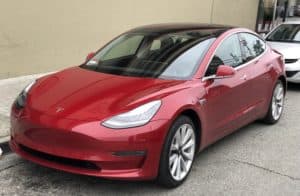Here’s what you need to know about adding EV chargers to your multifamily property!
As more and more electric vehicles hit Canadian roadways, many are wondering how best to get in on the trend. For business owners, this might include adding electric vehicle charging stations for employees and customers alike, while homeowners have installed numerous single-family EV chargers over the past several years. Lately, however, multifamily EV chargers have become an emergent segment of the electric vehicle charging infrastructure here in BC and Canada as a whole.
Multifamily EV chargers provide EV owners in strata housing (such as apartments and condos) with a highly convenient place to charge their electric vehicles. This provides numerous benefits for both residents and property owners, and multifamily EV chargers have been made increasingly available via rebates and advances in charging technology. So today, we’re taking an in-depth look at the topic of multifamily EV charging, including the benefits of installing chargers and all the ways you can streamline the process. Let’s get started!
A larger EV ownership base 
Electric vehicle ownership continues to increase in Canada in 2021. According to Electric Autonomy Canada, “In the first quarter of this year, Canadians registered 11.8 percent more new motor vehicles than in the same quarter in 2020.” British Columbia continues to lead the charge when it comes to EVs, with EVs accounting for around 9.5 percent of all new vehicle registrations in the province.
What does this increase in ownership mean? Well, with more EVs on the road than ever before, the demand for convenient charging solutions has never been higher. While previously many EV charging installations were reserved for single-family homes, greater availability of EVs means the ownership base has expanded beyond just homeowners. Plenty of renters now own electric vehicles, and that number figures to continue increasing over the years.
This creates both a new demand for multifamily EV chargers and an excellent opportunity for strata owners to attract tenants.
Why install EV chargers for multifamily residential buildings?
EV chargers have long been thought of as an expensive luxury—an upgrade that, while certainly convenient, wouldn’t provide much return on investment for business owners or property managers. But this is no longer true! Adding EV chargers to strata housing can both directly and indirectly improve revenue, among other benefits.
Fast, convenient charging for EV owners
Keeping tenants happy is a key concern for property managers. As more drivers purchase EVs, it becomes more likely that these drivers will take up residence in strata housing. That means EV chargers provide an ideal charging solution that will make those EV owners much more likely to stick around.
A sought-after amenity
Not only will EV chargers help retain existing tenants, but they will also help attract new ones. Much like how EV chargers can add to the value of a single-family home, multifamily EV chargers are a relatively uncommon amenity that will make your building especially enticing for renters who either currently own or are considering an electric vehicle.
Potential for rebates and tax breaks
EV charging rebates abound here in Canada, and this is particularly true in BC. While we’ll expand on this a bit later, these rebates help to significantly reduce the cost of adding EV chargers to multifamily residential buildings. Further, there’s also the potential for additional tax breaks based on how green your building is overall.
Billing solutions help recoup costs
While EV chargers add to the power demands of your building, multifamily chargers have billing capabilities that will allow you to offset these costs. Tenants will still appreciate the convenience of charging right from their parking lot or garage at a much lower rate than they would pay at third-party public charging stations.
Flexible installation options
Today, installing EV chargers is easier than ever before. This is just as true for multifamily EV chargers as it is in any other situation. EV charging setups can be installed in a variety of configurations and locations, and many kinds of chargers are available for use in multifamily buildings. Here’s what you should know about the flexibility of these chargers.
Install in any location
No two multifamily residential buildings have the same parking configuration, it seems. Some have wide-open lots, while others use assigned spaces or even private garages. Depending on the parking setup at your apartment, condo, or other strata housing, you may have concerns about whether EV charging stations can be installed.
These days, though, there’s an EV charging solution for just about every parking setup. EV chargers can be added both to open parking lots or enclosed spaces like garages and carports. Additionally, there are multiple metering options to suit your needs when it comes to covering charging costs.
A variety of EV charger options
The EV charging industry has expanded greatly over the last decade or so, with more manufacturers than ever providing competitive charging solutions. Both Level 1 and Level 2 charging options can be viable for multifamily EV charging needs.
Here at TCA Electric, we work with a wide variety of EV charging devices. We commonly recommend FLO for those looking to provide a charger suitable for multiple EV makes, while Tesla chargers are of course ideal for Tesla vehicles. Charging solutions from SWTCH and GRIZZL-E provide even more variety to suit the specific needs of your building.
Rebates frequently available for multifamily EV chargers!
BC has provided numerous incentives for residents to install EV chargers in many different settings, including single-family homes, workplaces, and more. Incentives for multifamily EV chargers have been included in various rebate programs as well, helping to cut down the cost of upgrading your building.
Some of the programs that have included funding for EV chargers in strata housing include:
- BC Hydro – The original BC Hydro EV charger rebate program was expanded to include incentives for multifamily EV chargers. This includes incentives for creating an EV charger installation plan as well as rebates for the EV chargers themselves.
- NRCAN – The Zero Emission Vehicle Infrastructure Program (ZEVIP) from NRCAN set aside $280 million to be used for EV charger rebates through 2024. While funding is not currently provided for multifamily chargers, the focus of the program rotates periodically.
- Plug In BC – Part of the CleanBC Go Electric Program, Plug In BC offers rebates ranging “from up to $20,000 per <50 kW DCFC, to $130,000 per >100 kW DCFC (for Indigenous communities).” Applications are reviewed on a 2-month cycle, with the most recent cycle ending August 27th. Keep an eye out for the next cycle!
In addition to funding the purchase and installation of EV chargers, the BC Hydro program also includes incentives that help cover electrical upgrades that may be necessary to make multifamily residential buildings EV ready. In addition, for those that may not be ready to upgrade their building’s electrical infrastructure, devices such as load management units and transfer switches can provide the necessary capabilities for EV charging.
TCA Electric Can Help You Create a Multifamily EV Charging Plan!
Installing EV chargers in multifamily residential buildings isn’t as simple as adding a charger to a single-family home. It’s important to have a complete, cohesive plan covering all aspects of the charging setup, including location, the type of charger, billing, and much more.
The EV charging experts at TCA Electric are masters at carefully planning out the perfect EV charging solution for the needs of both you and your tenants. If you’re interested in adding EV chargers to your multifamily building, our experienced and qualified electricians are standing by to help! Contact TCA Electric today.
